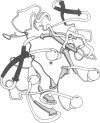Abstract
The three-dimensional structure of the fungal serine protease proteinase K has been determined at 3.3 A resolution by single crystal X-ray diffraction analysis. The enzyme crystallizes in the tetragonal space group P4(3)2(1)2 with cell constants a = b = 68.3 A, c = 108.5 A. The asymmetric unit consists of one monomer of 27 000 daltons mol. wt., approximately 50% higher than the so far assumed value of 18 500 daltons. The main chain fold of proteinase K shows a high degree of tertiary homology with the corresponding bacterial subtilisin BPN'. Proteinase K is the second enzyme in this family of serine proteases to be studied by X-ray diffraction, thus confirming the existence of two unrelated families of serine proteases in pro-and eukaryotes.
Full text
PDF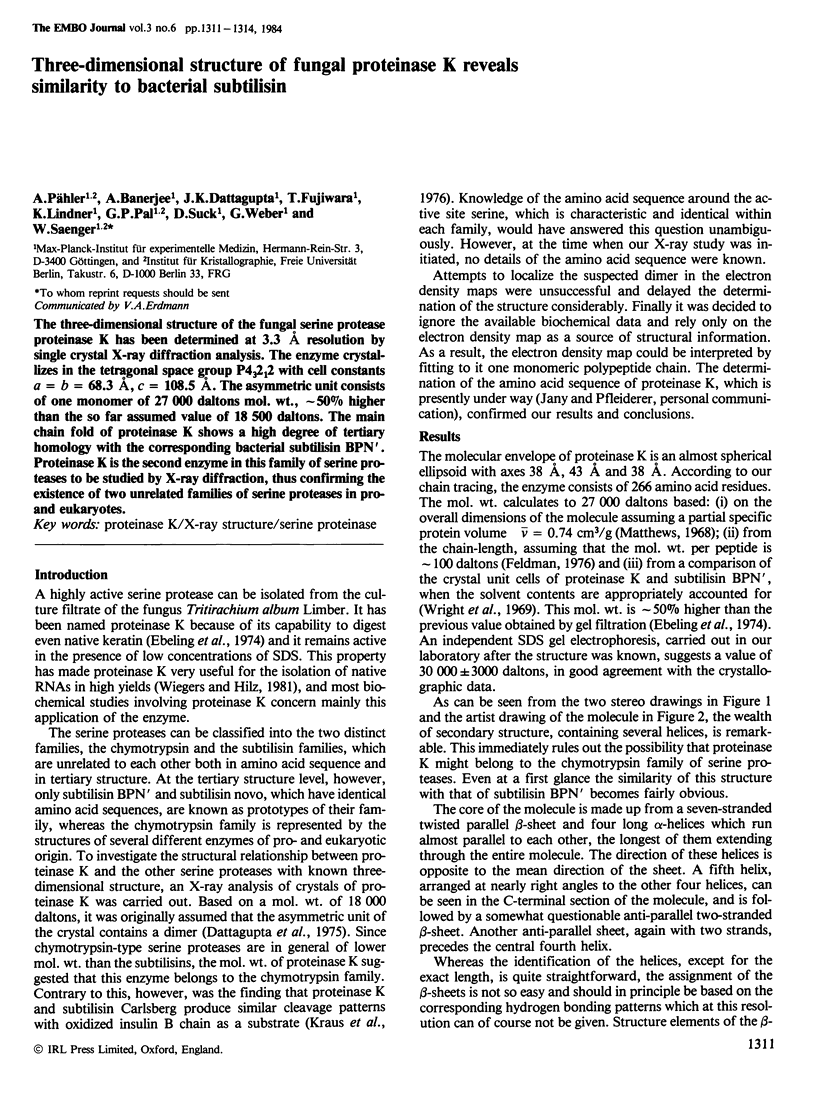
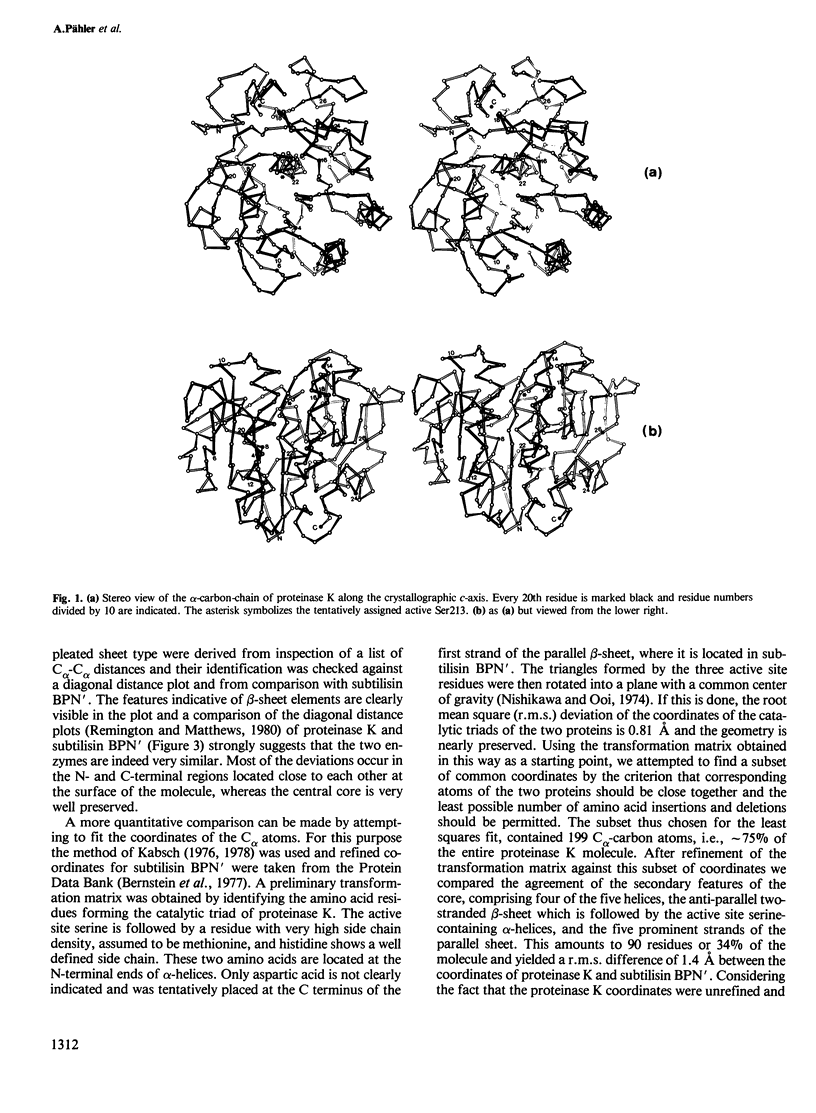
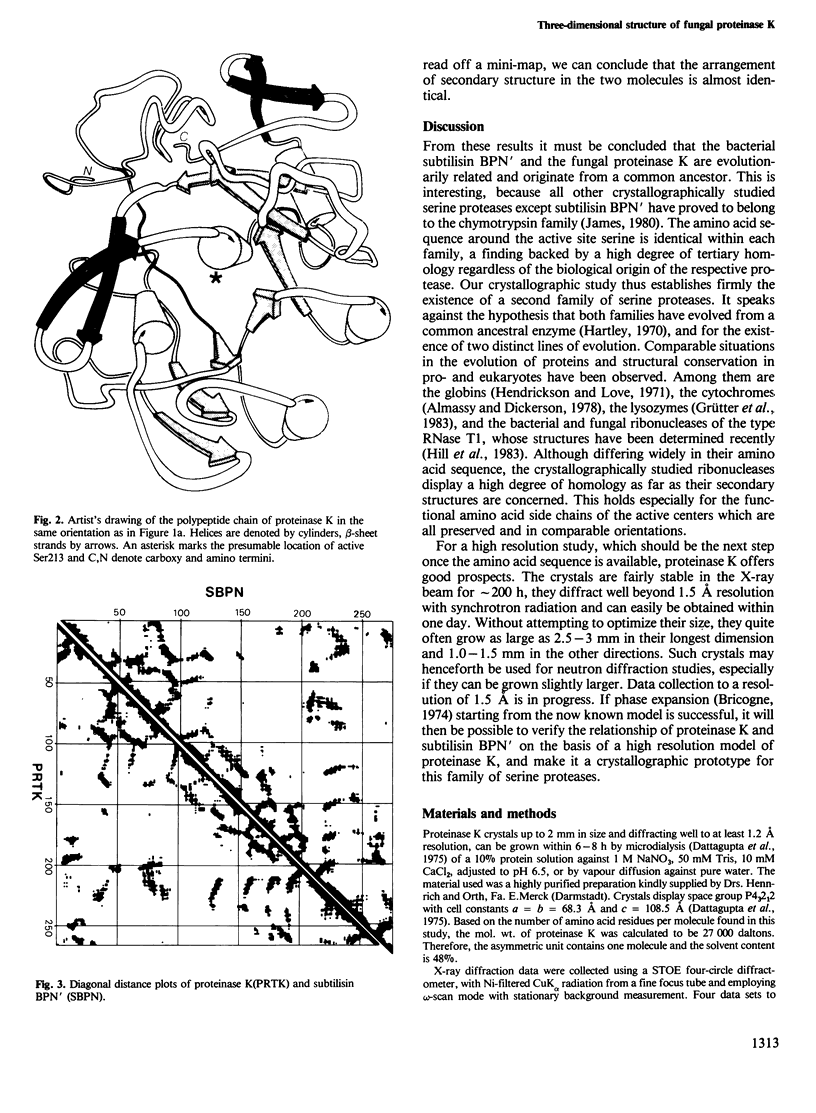
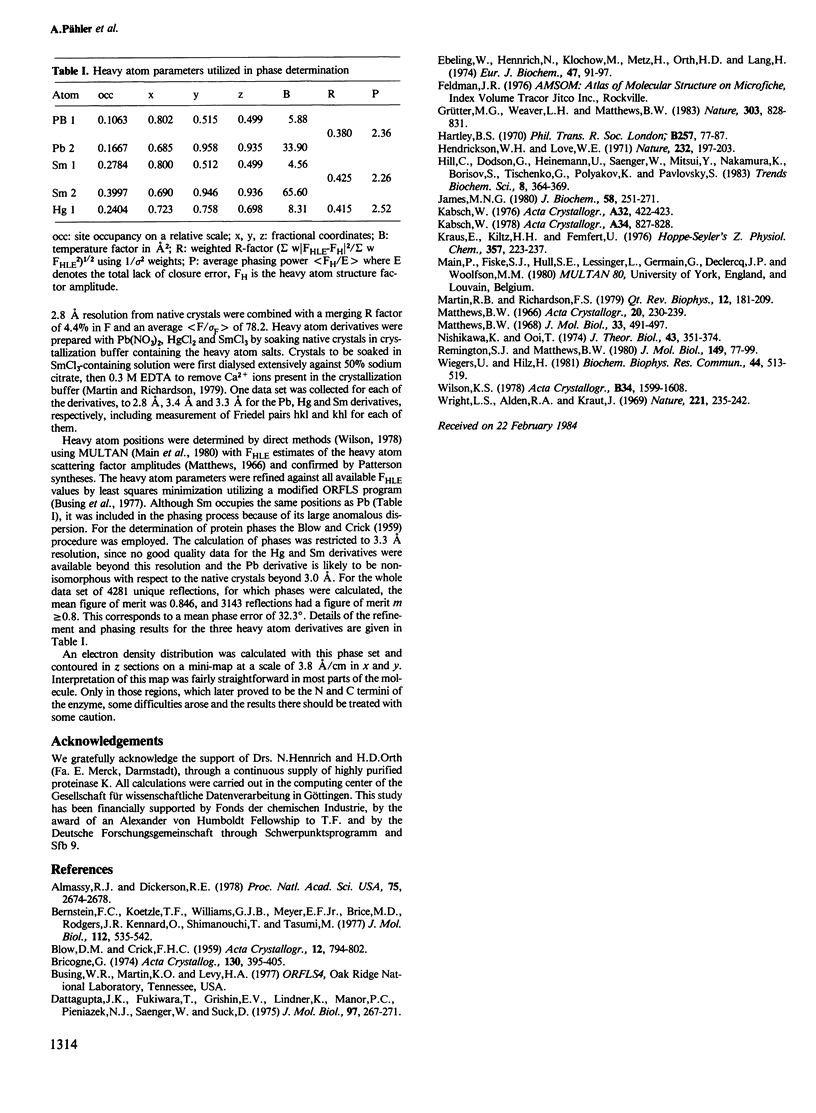
Images in this article
Selected References
These references are in PubMed. This may not be the complete list of references from this article.
- Almassy R. J., Dickerson R. E. Pseudomonas cytochrome c551 at 2.0 A resolution: enlargement of the cytochrome c family. Proc Natl Acad Sci U S A. 1978 Jun;75(6):2674–2678. doi: 10.1073/pnas.75.6.2674. [DOI] [PMC free article] [PubMed] [Google Scholar]
- Bernstein F. C., Koetzle T. F., Williams G. J., Meyer E. F., Jr, Brice M. D., Rodgers J. R., Kennard O., Shimanouchi T., Tasumi M. The Protein Data Bank: a computer-based archival file for macromolecular structures. J Mol Biol. 1977 May 25;112(3):535–542. doi: 10.1016/s0022-2836(77)80200-3. [DOI] [PubMed] [Google Scholar]
- Dattagupta J. K., Fujiwara T., Grishin E. V., Lindner K., Manor P. C., Pieniazek N. J., Saenger R., Suck D. Crystallization of the fungal enzyme proteinase K and amino acid composition. J Mol Biol. 1975 Sep 15;97(2):267–271. doi: 10.1016/s0022-2836(75)80039-8. [DOI] [PubMed] [Google Scholar]
- Ebeling W., Hennrich N., Klockow M., Metz H., Orth H. D., Lang H. Proteinase K from Tritirachium album Limber. Eur J Biochem. 1974 Aug 15;47(1):91–97. doi: 10.1111/j.1432-1033.1974.tb03671.x. [DOI] [PubMed] [Google Scholar]
- Grütter M. G., Weaver L. H., Matthews B. W. Goose lysozyme structure: an evolutionary link between hen and bacteriophage lysozymes? Nature. 1983 Jun 30;303(5920):828–831. doi: 10.1038/303828a0. [DOI] [PubMed] [Google Scholar]
- Hendrickson W. A., Love W. E. Structure of lamprey haemoglobin. Nat New Biol. 1971 Aug;232(33):197–203. doi: 10.1038/newbio232197a0. [DOI] [PubMed] [Google Scholar]
- Kraus E., Kiltz H. H., Femfert U. F. The specificity of proteinase K against oxidized insulin B chain. Hoppe Seylers Z Physiol Chem. 1976 Feb;357(2):233–237. [PubMed] [Google Scholar]
- Martin R. B., Richardson F. S. Lanthanides as probes for calcium in biological systems. Q Rev Biophys. 1979 May;12(2):181–209. doi: 10.1017/s0033583500002754. [DOI] [PubMed] [Google Scholar]
- Matthews B. W. Solvent content of protein crystals. J Mol Biol. 1968 Apr 28;33(2):491–497. doi: 10.1016/0022-2836(68)90205-2. [DOI] [PubMed] [Google Scholar]
- Nishikawa K., Ooi T. Comparison of homologous tertiary structures of proteins. J Theor Biol. 1974 Feb;43(2):351–374. doi: 10.1016/s0022-5193(74)80066-4. [DOI] [PubMed] [Google Scholar]
- Remington S. J., Matthews B. W. A systematic approach to the comparison of protein structures. J Mol Biol. 1980 Jun 15;140(1):77–99. doi: 10.1016/0022-2836(80)90357-5. [DOI] [PubMed] [Google Scholar]
- Wiegers U., Hilz H. A new method using 'proteinase K' to prevent mRNA degradation during isolation from HeLa cells. Biochem Biophys Res Commun. 1971 Jul 16;44(2):513–519. doi: 10.1016/0006-291x(71)90632-2. [DOI] [PubMed] [Google Scholar]
- Wright C. S., Alden R. A., Kraut J. Structure of subtilisin BPN' at 2.5 angström resolution. Nature. 1969 Jan 18;221(5177):235–242. doi: 10.1038/221235a0. [DOI] [PubMed] [Google Scholar]



